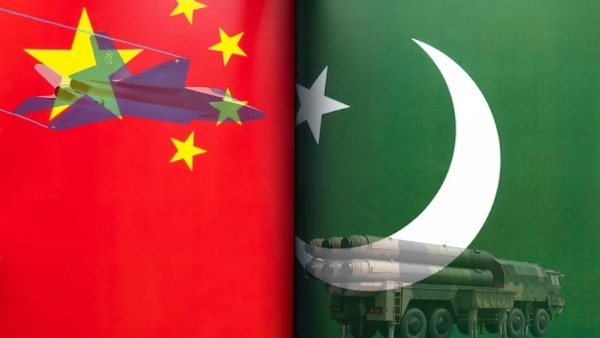Multidomain operations are the face of modern warfare, emphasising a synchronised use of capabilities across five domains simultaneously, including land, sea, air, space, and cyberspace. Pakistan has made significant strides in this regard. Its capabilities in electronic warfare, precision targeting, and interoperability are largely homegrown, developed through years of doctrinal evolution and indigenous innovation. Pakistan’s victory against India in the May 2025 war stands as a testament to these multidomain capabilities.
Nevertheless, the ever-evolving nature of technology points to the reality that the next conflict will be even more complex and multidimensional. Kinetic operations will converge with cyber disruptions, electronic jamming, and information warfare. India will also attempt to fill the gap, as it did post-Pulwama by bringing in Rafales. To stay on par with the adversary, Pakistan’s future outlook must revolve around evolving its strategic missile defence, expanding space-based capabilities for Intelligence, Surveillance, and Reconnaissance (ISR), and investing in laser-guided Directed Energy Weapons (DEWs).
China can be a valuable partner in this regard, given the historic affinity between the two countries, the PAF’s induction of Chinese J-10C fighters and PL-15 missiles, and the persistent intent to strengthen cooperation in technology, training, and operational domains. The Chinese Air Force Chief expressed this during his recent visit to Air Headquarters, Islamabad, where he applauded the PAF’s operational readiness and multidomain capabilities under the command of Air Chief Marshal Zaheer Ahmed Babar Sidhu.
So, when it comes to the future trajectory of Pakistan’s multidomain capabilities, one area that requires strategic recalibration is missile defence. Previously, Pakistan opposed pursuing strategic missile defence systems, deeming them escalatory. However, India’s offensive use of conventional strategic missiles during the recent conflict has changed the equation.
India’s posture has shifted towards employing precision conventional strikes to impart strategic effects without crossing the nuclear threshold. Therefore, to ensure credible deterrence, Pakistan needs to revisit its stance and re-evaluate its doctrine.
Moreover, Pakistan must explore long-range missile defence systems that can intercept BrahMos-class supersonic weapons, intermediate-range ballistic missiles, and low-orbit satellites. The Chinese HQ-19 system is tailor-made in this respect. While the current HQ-9 system deployed by Pakistan allows integrated air defence, the potential induction of the HQ-19 would add a space-based dimension to the interception. This is essential given India’s anti-satellite (ASAT) capability and growing space militarisation. To further multiply the gains and add strategic depth, Pakistan must consider synergetic employment between the HQ-9 and HQ-19.
Recently, precision-guided munitions (PGMs), which require high resolution and real-time intelligence, have taken center stage in modern-day air power. Pakistan operates its own Earth observation satellites, but to enable real-time intelligence for future defence applications, particularly PGMs, there is a need to invest in Electro-Optical, Infrared, and Synthetic Aperture Radar satellites as they offer situational awareness and accurate target acquisition in a multidomain environment.
Under the vision of the Chief of Air Staff, the PAF is actively working towards indigenous space-based ISR capabilities. Technological collaboration with China would help accelerate this pace. In the longer run, Pakistan must look towards building space launch facilities and devise ways to integrate ISR into its weapon systems.
Lately, laser-guided DEWs are the new kind of weapon system entering the South Asian defence landscape. They utilise laser beams to engage and destroy targets, offering precision, stealth, and the speed of light capabilities, while also being an affordable and cost-effective option. They provide a critical layer of defence against drone swarms, incoming projectiles, and loitering munitions, all of which were deployed by India in the May 2025 conflict.
India has initiated an indigenous DEW programme, whereby it recently tested the 30 kW Mark-2A system with a 5 km range and also claims to have built the 300 kW Surya DEW with a 20 km range. China has also made significant strides in this area with the development of a small, handheld AM-500 DEW, which has a range of 0.8-1 km, and a more advanced Sheng-1 DEW system, which has a range of 2-25 km for drone/missile interception and destruction. As DEWs are the future, Pakistan must prioritise research and development in this area to prevent capability gaps.
As the adage goes, there is no greater danger than underestimating your opponent. Given that India has accelerated its procurements following its humiliating defeat in the May 2025 confrontation, Pakistan must also enhance its multidomain capabilities and ensure doctrinal reassessment. Deepening cooperation with China for R&D and technology transfer can boost indigenous efforts. This strategic cooperation can act as a deterrent against India’s escalatory behaviour and ensure that the edge in the balance of air power remains with Pakistan.
Table of Contents
ToggleMaheera Munir
Maheera Munir is a researcher at the Centre for Aerospace and Security Studies (CASS), Lahore, Pakistan. She can be reached at info@casslhr.com.












